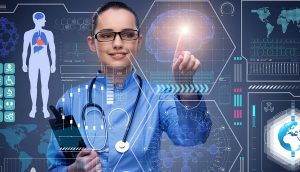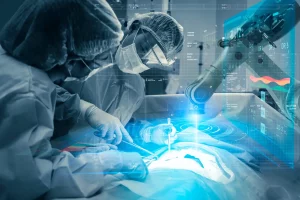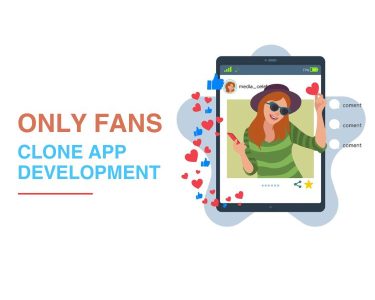The Advent of Telemedicine

The advent of telemedicine marks a pivotal shift in modern medicine. Telemedicine, the ability to provide clinical health care at a distance, has revolutionized the way patients interact with healthcare professionals. This technology-driven approach has broken down geographical barriers, enabling patients in remote areas to receive medical consultations and treatments without the need for physical travel.
Telemedicine is a key driver in the technological revolution of medicine. It has facilitated the exchange of valid information for diagnosis and treatment of diseases and injuries, research and evaluation, and for the continuing education of healthcare providers, all in the interests of advancing the health of individuals and their communities. This is just the beginning of a significant transformation in the healthcare sector.
Artificial Intelligence and Machine Learning in Healthcare
Artificial intelligence (AI) and machine learning are revolutionizing modern medicine. These technologies are being used to automate administrative tasks, to provide personalized medicine, and to perform complex surgeries. AI algorithms are also being used to analyze vast amounts of medical data, enabling doctors to make better diagnostic decisions.
Modern medicine is leveraging AI for improved patient outcomes. AI algorithms can analyze medical records and images to identify patterns that can help in the prediction and prevention of diseases. They can also assist doctors in making more accurate diagnoses, leading to more effective treatment plans. The integration of AI in healthcare is not just a trend, but a necessity for the future of medicine.
Impact of Robotics in Surgery

The role of robotics is redefining the landscape of modern medicine. Robotic surgery, a method that uses robotic systems to aid in surgical procedures, offers greater precision, control, and stability than traditional surgical methods. This technology allows surgeons to perform complex procedures with more accuracy, flexibility, and control than is possible with conventional techniques.
Robotic surgery has catalyzed the technological revolution in medicine. It has improved patient outcomes by reducing the risk of infection, minimizing blood loss, and shortening recovery times. The future of surgery lies in the hands of robots, and this future is already here.
Genomic Medicine: A New Frontier
Genomic medicine, a revolutionary aspect of modern medicine, involves using the information from a patient’s genomic sequence to guide their medical care. This approach to medicine allows for more personalized treatment plans and has the potential to drastically improve patient outcomes.
Technological advancements have propelled the evolution of genomic medicine. The ability to sequence a person’s genome quickly and affordably is a recent development that has opened up new possibilities in disease prevention, diagnosis, and treatment. The technological revolution in medicine has brought us to the cusp of a new era in healthcare.
The Role of Big Data in Modern Medicine
Big data is playing a critical role in advancing diagnostic accuracy in modern medicine. The ability to collect and analyze vast amounts of health-related data has led to breakthroughs in disease detection and treatment. Big data analytics can help identify trends and patterns that can predict outbreaks and prevent diseases.
Modern medicine has been revolutionized by technological advancements in big data. The ability to analyze large datasets has led to the development of predictive models that can help in the early detection of diseases, thereby improving patient outcomes. The use of big data in healthcare is a game-changer, and its potential is only just beginning to be realized.
Nanotechnology: A Tiny Revolution in Medicine
Nanotechnology is drastically reshaping the landscape of modern medicine. This technology involves the manipulation of materials on an atomic or molecular scale, and it has the potential to revolutionize a wide range of medical procedures, from drug delivery to tissue repair.
The technological revolution is propelling advancements in nanomedicine. Nanotechnology can be used to target specific cells or tissues, reducing the side effects of drugs and improving their efficacy. The potential of nanotechnology in medicine is vast, and we are only scratching the surface of what is possible.
3D Printing in Medical Applications

3D printing is revolutionizing patient-specific solutions in modern medicine. This technology allows for the creation of customized medical devices and prosthetics, which can significantly improve patient outcomes. 3D printed implants, for example, can be designed to fit perfectly with a patient’s anatomy, reducing complications and improving the success of surgeries.
Modern medicine is witnessing a technological revolution via 3D printing. This technology has the potential to transform healthcare by making medical devices more accessible and affordable. The future of medicine is being printed, one layer at a time.
Virtual Reality and Augmented Reality in Medical Training
Virtual reality (VR) and augmented reality (AR) are revolutionizing the landscape of modern medicine training. These technologies provide immersive, realistic simulations of medical procedures, allowing healthcare professionals to practice and hone their skills in a safe environment.
VR and AR are revolutionizing the modern medicine landscape. They provide a new way to educate and train medical professionals, improving their ability to provide high-quality care. These technologies are not just changing the way we train healthcare professionals, they are changing the way we think about medical education.
Conclusion
In conclusion, the technological revolution in modern medicine is a dynamic, ongoing process that continues to reshape the landscape of healthcare. From telemedicine to AI, robotics, genomics, big data, nanotechnology, 3D printing, VR, and AR, each of these advancements is contributing to a more efficient, effective, and personalized healthcare system. The future of medicine is here, and it is technology-driven.




